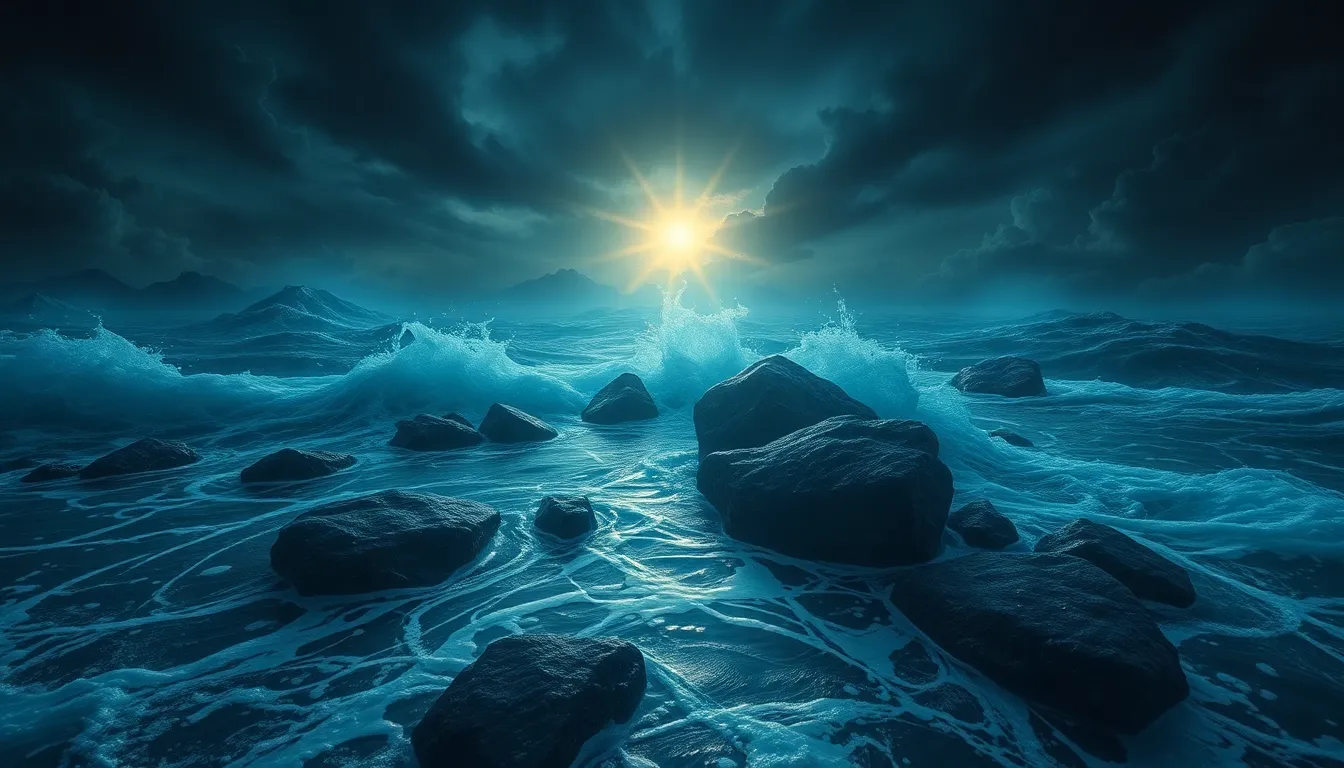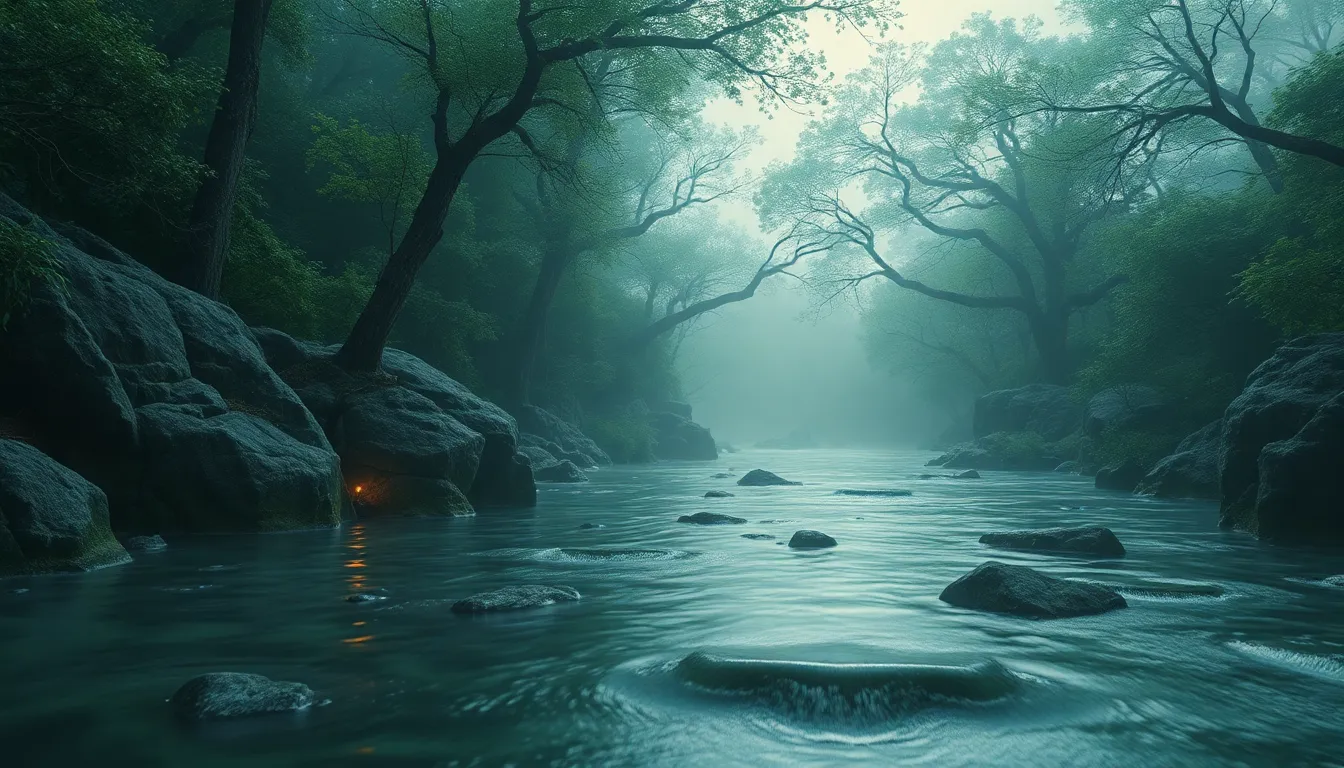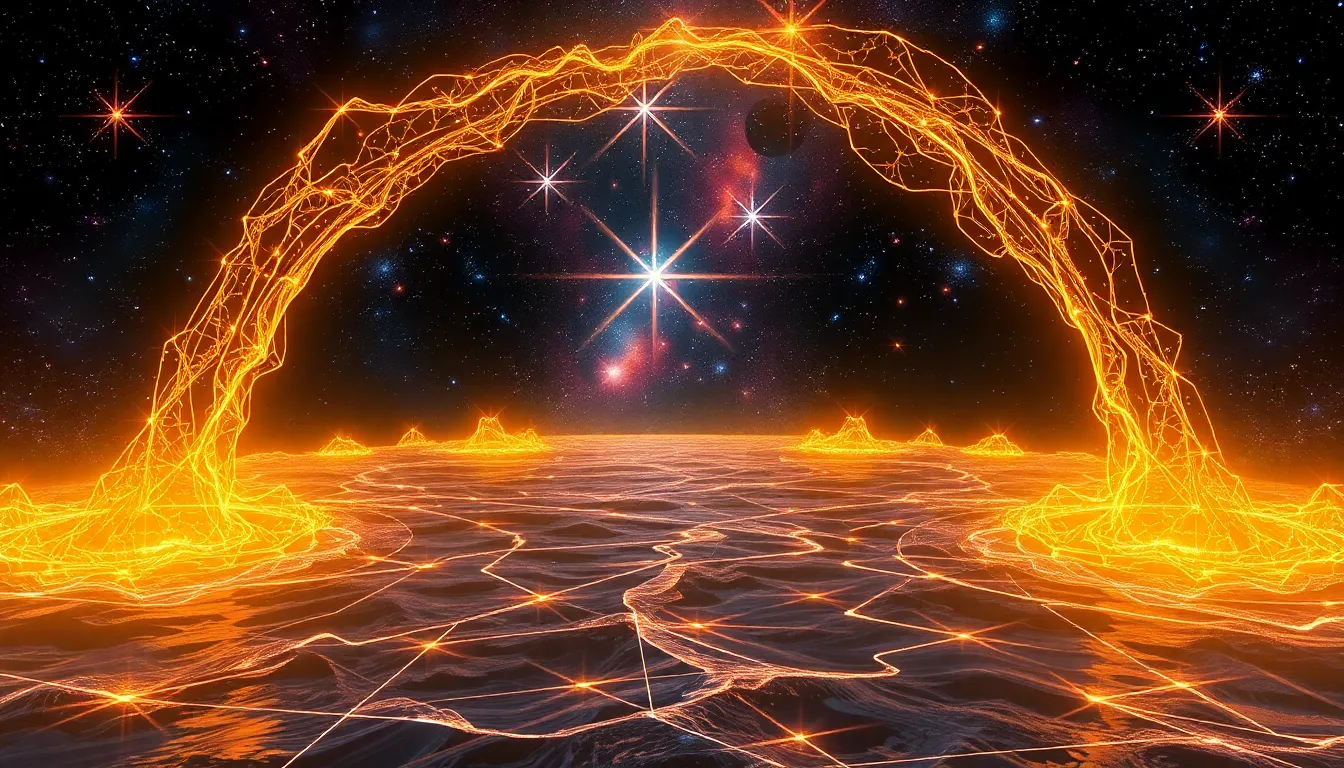The River of the Tempest: Myths of Stormy Waters
I. Introduction
The River of the Tempest is a mythical concept that embodies the chaotic and unpredictable nature of stormy waters. It serves as a powerful symbol in various cultural narratives, representing not just physical rivers but also emotional and spiritual journeys.
Water has played a crucial role in mythology and culture, often symbolizing life, death, and transformation. From ancient civilizations to modern storytelling, water has been revered, feared, and personified in myriad ways.
This article aims to explore the historical context of stormy waters in mythology, delve into the characteristics and significance of the River of the Tempest, and examine the deities and heroes associated with this powerful symbol. We will also touch upon the scientific aspects of storms, artistic representations, and the river’s modern interpretations.
II. Historical Context of Stormy Waters in Mythology
Rivers have been pivotal in the development of ancient civilizations, often serving as lifelines for trade, agriculture, and sustenance. They were frequently imbued with spiritual significance, believed to be the veins of the earth.
Storms and turbulent waters have long been symbols of chaos and change in folklore. They often reflect the internal struggles faced by individuals and societies, representing the tumultuous nature of life.
Key myths featuring stormy waters include:
- The Greek myth of Poseidon, god of the sea, who could calm or unleash storms.
- The Norse legend of Ragnarok, where the world is engulfed in water during the final battle.
- The biblical story of Noah’s Ark, highlighting the destructive power of a great flood.
III. The River of the Tempest: A Central Figure in Myth
The myth of the River of the Tempest has evolved over centuries, drawing from various cultural narratives. It often represents the boundary between the known and the unknown, challenging heroes and mortals alike.
Characteristics of the River of the Tempest include:
- Unpredictability: The waters can change from serene to violent in an instant.
- Symbol of transformation: Those who navigate its waters often emerge changed.
- Gateway to other realms: It is seen as a passage between life and death or different worlds.
Culturally, the River of the Tempest signifies the struggles humanity faces against nature and fate, embodying the duality of destruction and renewal.
IV. Deities and Spirits Associated with Stormy Waters
Water deities are prevalent across various mythologies, representing the life-giving and destructive powers of water. These figures often embody the traits of the waters they govern, reflecting their complexities.
Specific figures tied to the River of the Tempest include:
- Poseidon (Greek mythology): The god of the sea, earthquakes, and storms.
- Yam (Canaanite mythology): A chaotic deity of the sea and storms.
- Njord (Norse mythology): A god associated with the sea, winds, and wealth.
These deities often highlight the relationship between humans and natural disasters, emphasizing respect and reverence for the power of nature.
V. Tales of Heroes and Adversities on the River
Throughout mythology, many legendary figures have faced the challenges posed by the River of the Tempest. These narratives often serve as allegories for personal growth and resilience.
Some notable heroes include:
- Odysseus (Greek mythology): His journey home is fraught with stormy seas and trials.
- Beowulf (Anglo-Saxon epic): Fights sea monsters and faces turbulent waters.
- Hercules (Greek mythology): Undertakes a journey across treacherous waters as part of his labors.
These tales of survival and transformation often impart valuable lessons, such as the importance of courage, adaptability, and the acceptance of one’s fate.
VI. The Science Behind Stormy Waters
Understanding the meteorological phenomena of storms helps clarify the myths surrounding them. Storms result from complex atmospheric conditions, including temperature differences, humidity, and pressure systems.
Natural events like floods and storms have historically inspired myth-making, as ancient peoples sought to explain the chaos they observed in nature.
The intersection of science and mythology highlights how cultures interpret natural disasters, often personifying them in stories and deities that reflect human experiences with fear and respect for nature.
VII. Artistic Representations of the River of the Tempest
The River of the Tempest has inspired countless artistic representations across various mediums:
A. Literature
Notable works include:
- “The Odyssey” by Homer, which vividly depicts the trials faced by Odysseus at sea.
- “Moby Dick” by Herman Melville, exploring man’s struggle against nature.
- “The Tempest” by William Shakespeare, which uses stormy waters as a metaphor for emotional turmoil.
B. Visual Arts
Artists have captured the tumultuous beauty of stormy waters in paintings such as:
- “The Great Wave off Kanagawa” by Hokusai, showcasing the power of the sea.
- “Stormy Sea” by Winslow Homer, portraying the struggle against nature.
- “The Deluge” by Gustave Doré, illustrating biblical flood narratives.
C. Music and Performances
Musical compositions and performances often evoke the emotions associated with the River of the Tempest, such as:
- Beethoven’s “Pastoral Symphony,” which captures the essence of nature, including stormy moments.
- Stravinsky’s “The Rite of Spring,” reflecting the chaos of nature and primal forces.
- Operas that depict storms as pivotal moments in the narrative, enhancing emotional impact.
VIII. Modern Interpretations and Cultural Relevance
The myth of the River of the Tempest continues to resonate today, as environmental concerns and climate change highlight the significance of water in our lives. The symbolism of water often reflects humanity’s relationship with nature, emphasizing both its beauty and its potential for destruction.
Contemporary media and storytelling have adapted these myths, exploring themes of resilience, climate justice, and the interplay between humans and the environment. Examples include:
- Films that depict natural disasters and human survival.
- Novels that weave mythological elements into modern narratives.
- Art installations that comment on the state of our waters and climate.
IX. Comparative Myths: The River of the Tempest Across Cultures
Similar myths of stormy waters exist across diverse cultures, each with unique features and interpretations. Common themes often include:
- The struggle against nature and the elements.
- The journey of heroes through chaos to achieve transformation.
- The reverence for deities governing water and storms.
Understanding these myths provides insight into cultural identities and values, showcasing how different societies address the universal experience of encountering the unknown.
X. Conclusion
The exploration of the River of the Tempest reveals its multifaceted significance in mythology and culture. From historical contexts to modern interpretations, the river serves as a powerful metaphor for the human experience, reflecting our struggles with nature, fate, and transformation.
The enduring legacy of the River of the Tempest reminds us of the profound relationship between humanity and water—a relationship marked by awe, respect, and the constant quest for understanding amidst the storm.



